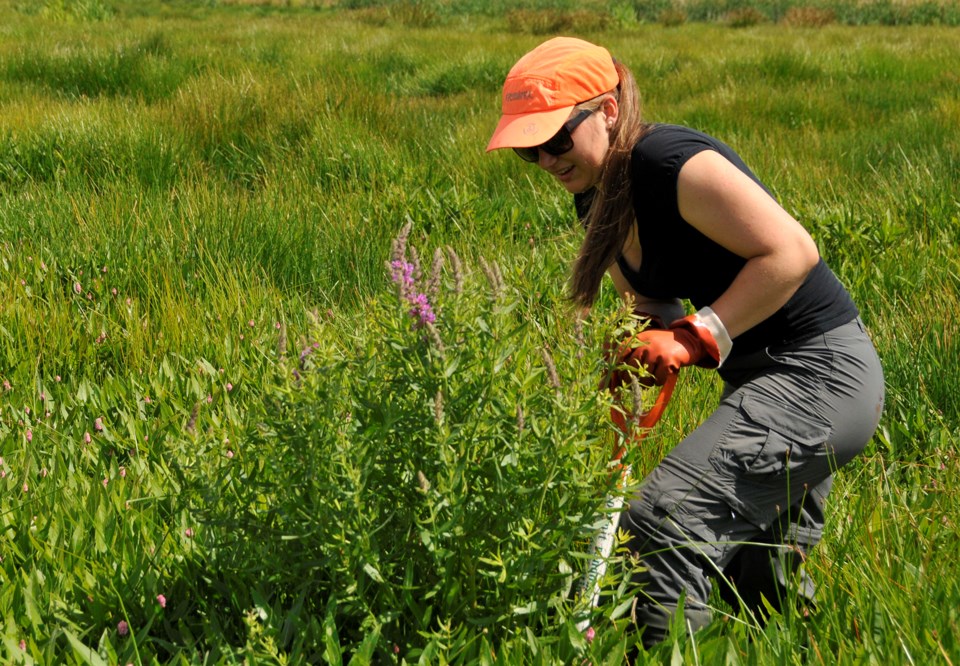That plant grew so quickly it outstripped and out-competed natural flora found in the New World — and it wasn’t long before it began to spread all over the continent.
Today, purple loosestrife remains one of the top invasive plant species concerning to conservationists, with a recent warning for Saskatchewan by the Nature Conservancy of Canada listing the noxious weed as one of seven plants to keep an eye out for this spring and summer.
“Invasive species are an everyday concern for Saskatchewan land managers and the public alike,” said Matthew Braun, manager of conservation science and planning with the Nature Conservancy of Canada. “Controlling the spread of invasive plants and animals have real world implications. It can take thousands of dollars to deal with a single weed species in your pasture and one family of wild pigs can create an awful mess in the wild. These species reduce available forage for grazers, decrease biodiversity by outcompeting native species, and mar the beauty of our pristine native ecosystems.”
This is one area where COVID-19 could actually have a benefit: with more people out taking walks and enjoying nature after months of lockdown, “now is now is an ideal time to identify and report invasive plants in our communities,” said NCC biologist Dan Kraus.
Spring is also a good time to investigate your backyard for invasive species, with the aforementioned purple loosestrife a prime example — the purple flowers are attractive and have been used as ornamental plants in the past, but seeds have spread outside gardens and into nature, furthering its spread.
Canadians of all ages and levels of experience can join in the effort to stem the spread of invasive species by downloading the iNaturalist phone app at iNaturalist.ca and uploading photos to help scientists and government agencies identify the species and monitor their spread.
Here’s an example of what to look for:
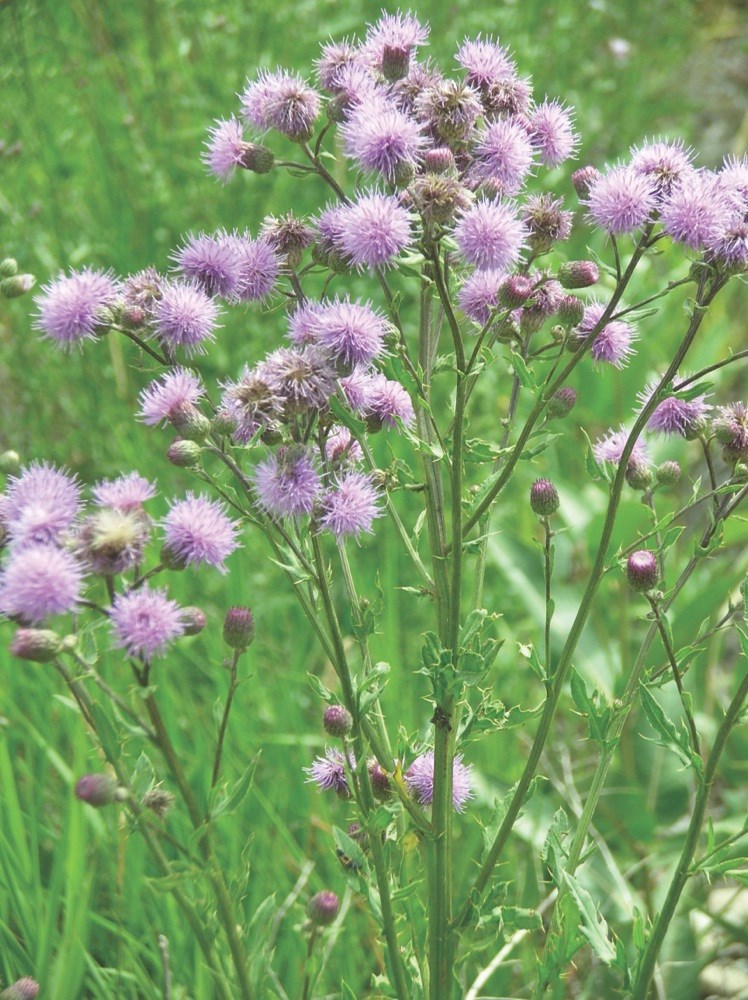 (Invasive Species Council of B.C.)
(Invasive Species Council of B.C.)Canada Thistle
Canada thistle is commonly found on roadsides, cultivated fields, pastures, logged forests, riverbanks, and other disturbed areas.
Canada thistle has purple or white flowers, with stalkless, spiny, dark-green leaves, growing to as high as two metres at maturity. The plant spreads rapidly through horizontal roots that give rise to large infestation patches nearby and out-competes native plants. It may produce 1,000 to 1,500 seeds per flowering shoot.
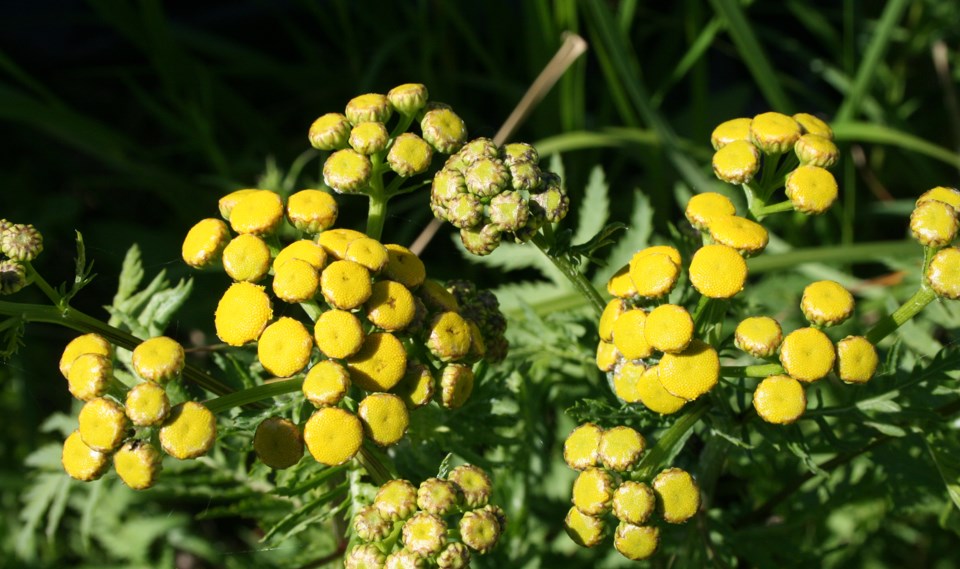 (Nature Conservancy of Canada)
(Nature Conservancy of Canada)Common Tansy
This plant with yellow, button-like flowers can grow as tall as 1.5 metres. It was introduced to North America from Europe in the 1600s as a horticultural and medicinal plant. It impacts stream banks and native grasslands and outcompetes native plants. It also produces a toxic compound that can impact cattle and wildlife.
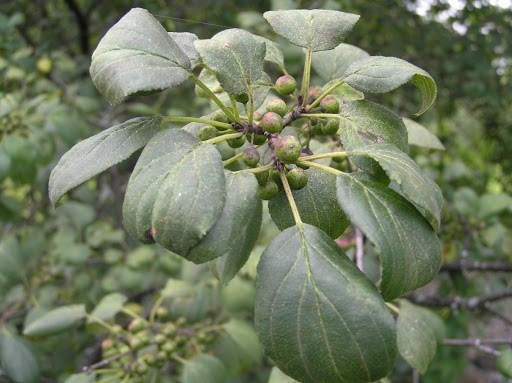 (Invadingspecies.com)
(Invadingspecies.com)Common Buckthorn
There are two kinds of this shrub — glossy false buckthorn and common — which have berry-like fruits that produce large number of seeds. They were introduced in the late 1800s primarily to create windbreaks along farm fields. Unfortunately, the plant spreads quickly and prevents native trees and shrubs from regenerating. Common buckthorn is also the primary host for the non-native soybean aphid, a serious threat to farmers.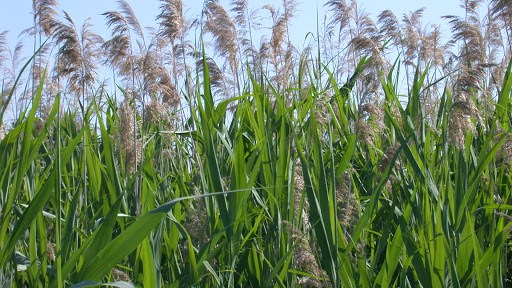 (Invadingspecies.com)
(Invadingspecies.com)European Common Reed
An invasive plant that causes damage to Saskatchewan’s biodiversity, wetlands and beaches. Invasive Phragmites is a perennial grass that spreads quickly and out-competes native species for water and nutrients. It releases toxins from its roots into the soil to hinder the growth of and kill surrounding plants. While it prefers areas of standing water, its roots can grow to extreme lengths, allowing it to survive in relatively dry areas.
 (First-nature.com)
(First-nature.com)Knapweed
The plant has hairy, greyish-green, split leaves on many branches growing from a single upright stem. The flowers are white or sometimes purple, with small, sharp, rigid spines on the bracts. It’s prolific seed producer, with individual plants producing up to 140,000 seeds per square metre. Seeds and plant fragments make their way into hay and the undercarriages of vehicles, allowing for new infestations over great distances. Knapweed chokes out desirable forage for livestock and wildlife and increases soil erosion.
Contact with spotted knapweed can cause skin irritation.
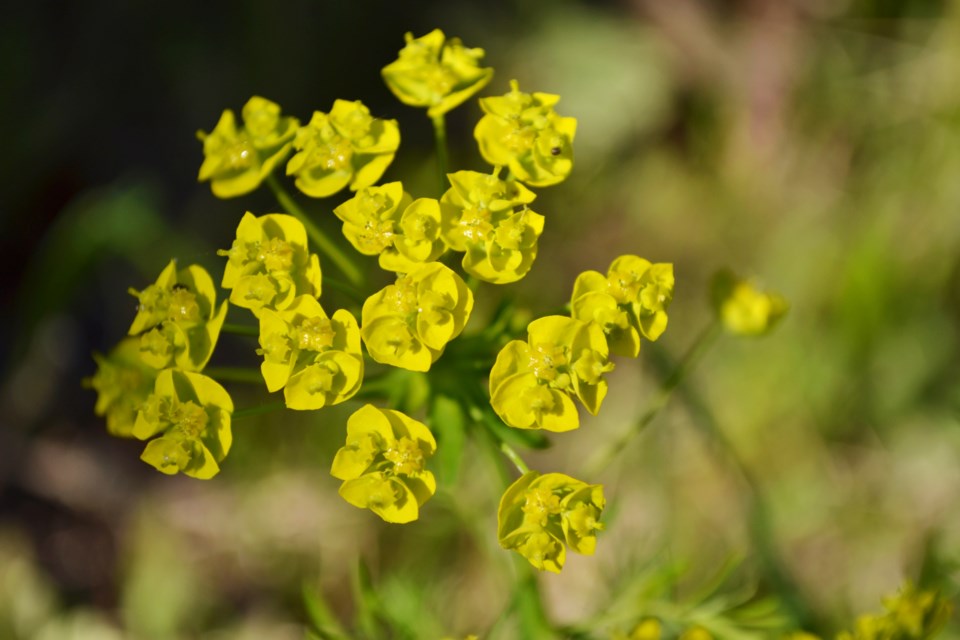 (Nature Conservancy of Canada)
(Nature Conservancy of Canada)Leafy Spurge
This plant has yellow-greenish flowers, and its leaves and stems have a white, milky sap. It probably came to Canada in grain seeds from Europe. It spreads quickly in open areas and threatens habitats, such as tall grass prairie in Manitoba. In Saskatchewan, beetles have been introduced to the area as a biological control.
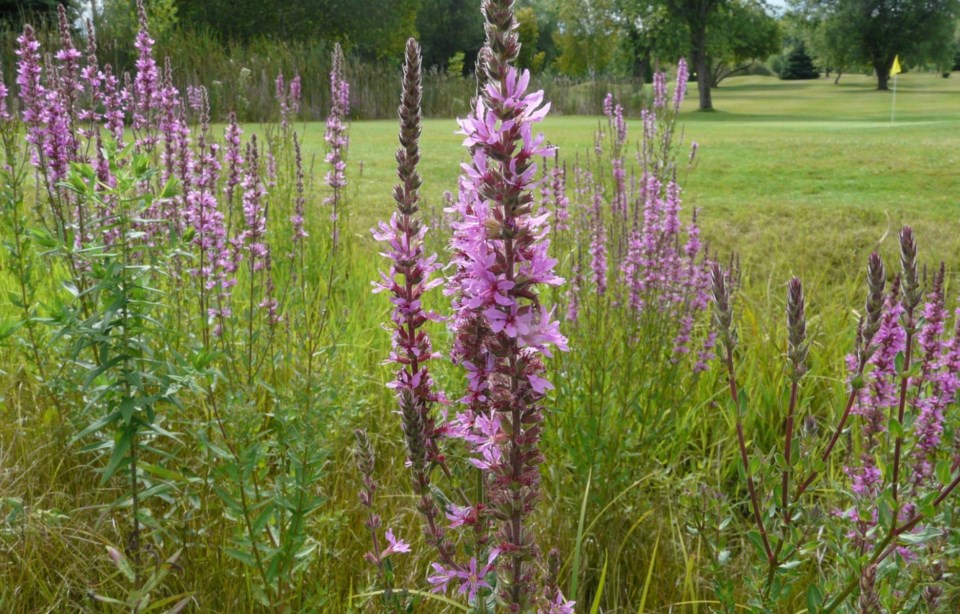 (Nature Conservancy of Canada)
(Nature Conservancy of Canada)Purple Loosestrife
This plant is listed as a noxious weed in many provinces but is still sometime sold as an ornamental plant. But before adding it to your garden, you should know it crowds out most native vegetation and creates near-monocultures. It has also been identified by the International Union for Conservation of Nature as one of the world's worst invading species, because a single purple loosestrife plant can produce over 2 million seeds each year.
For more information on invasive species — both flora and fauna — in Saskatchewan and Canada, be sure to check out the Nature Conservancy of Canada website at www.natureconservancy.ca
